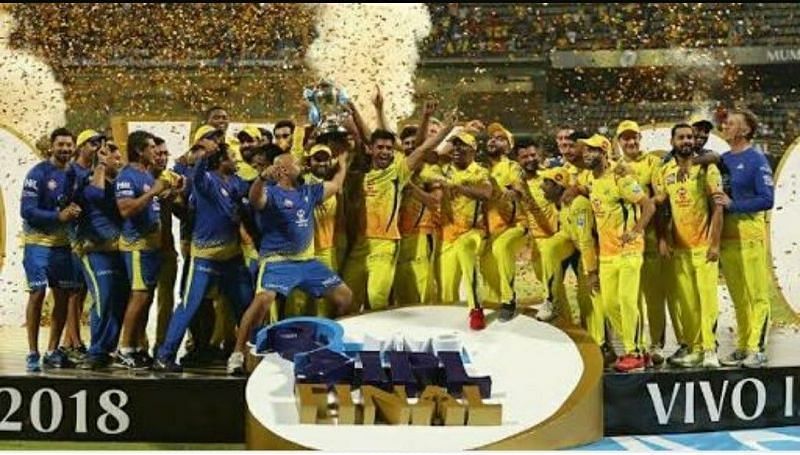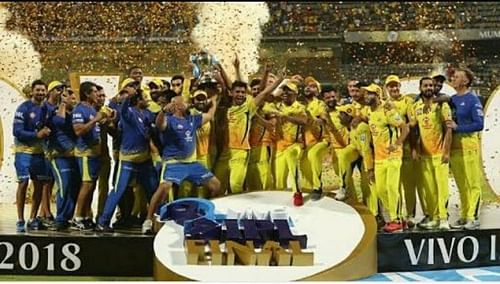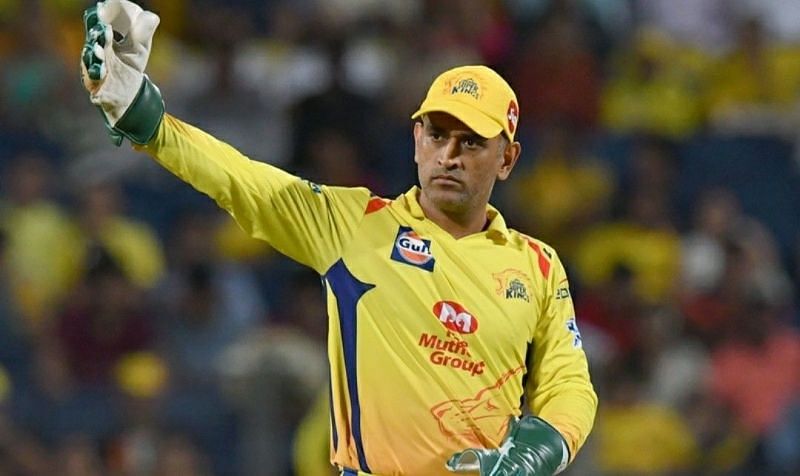
A fairy-tale comeback: Revisiting CSK's journey to the 2018 IPL title

A boundary through covers from their highest run-getter of the 2018 IPL and Chennai Super Kings (CSK) won their third IPL title in an one-sided final at the Wankhede Stadium. How did it all happen?
Turn back the clock to 7th April. On this very ground against defending champions Mumbai Indians, CSK were down and out as they required 47 off 3 overs with 2 wickets in hand.
Rewind a couple of months back to the IPL Auctions and you saw experts rating the CSK side 4 or 5 on a scale of 10. They had a large number of aged players in their side. Most players were well past their prime, including the skipper.
How did they lift the IPL trophy on 27 May despite being against all odds? How did they even manage to reach the finals? Let us go right back to the team retention.
Retaining the Core
CSK and MS Dhoni can never be thought of separately. The veteran had to be back to his adopted home once the franchise returned to action. The owners did as expected by retaining the three core Indian players - Dhoni, Suresh Raina and Ravindra Jadeja. Not only that, they brought back the coaching staff too. And bringing in Mike Hussey and L Balaji resulted in another masterstroke. The support staff gelled well with the team as they had already been a part of the franchise previously.
Investing in Experience
The average age of their squad was 33. This was why most experts regarded them as an ageing side who might not be able to make it to playoffs. But the CSK management had other ideas. They picked dependable players regardless of their age. These stalwarts had it in them to be consistent throughout the season.
They chose the road less taken by not going with the common perception that T20 was a young man's game. The wrong side of 30 was the right side of experience. The team management did take this into consideration and results were there for everyone to see. Overall, they picked a side full of multi-dimensional players.
Optimisation of Resources
Dhoni has always been an advocate of importance of a good fielding side. But this time he had to move out of his comfort zone and had to compromise with fielding to accommodate experience. They did not have an experienced Indian pacer nor they had any foreign pacer on whom they could rely on. But as has been the case over the years, another Indian seamer got unearthed and turned out to be a dependable wicket taker in the Power Play overs.
Watson after his century against Rajasthan Royals did not bowl much. The team management realised that the Australia had too much to offer as a batsman and there was no gain in putting extra pressure on his body as a bowler. The end result saw Watson overcoming a niggle and winning them the most important final.
Lungi Ngidi was the most improved cricketer going back to South Africa following a dream tournament. Aside from being a good new ball bowler, he was given the confidence to bowl at the death overs and he delivered in style.
Not being as effective at the death as he used to be, Dwayne Bravo was used in the middle overs towards the end of the season. This move was beneficial both for the team as well as the all-rounder himself.
Ambati Rayudu, a batsman who could bat at any position from one to seven, was sent out to open and his free-flowing game helped him become the team's leading run-getter. He was pushed to number four whenever there was a need to tackle spinners against certain opposition teams.
Imran Tahir was used in initial matches wherein pitches were conductive to spin. After a string of wins, when playoffs seemed within reach, players like Lungi Ngidi and David Willey were given more chances. This was done keeping in mind the kind of pitches in playoffs.
Similarly, Ravindra Jadeja got more and more overs as the league phase neared its end and the left-armer did deliver whenever required. Despite having a team suitable for the slow pitch at Chepauk, the way they adapted to win on different kind of pitches shows how well they extracted the best out of the rather limited resources they had.
A Game of Instincts

That Dhoni follows his instincts is no hidden fact. How often do you see someone like Harbhajan Singh play a full game and not bowl a single over? Yes, the skipper made it possible because he did not believe that the off-spinner would help in Qualifier 1. Someone like Jadeja bowled about 4 overs in 4 matches before turning into a strike bowler in subsequent games.
Sending in Harbhajan and Deepak Chahar to bat ahead of himself and Bravo was yet another out of the box decision. Dhoni would later say that he sent them in to create chaos.
Dhoni is not someone who would plan too much while going into the match. He has always been someone who goes into the field, assesses the conditions and then chooses from the options he has.
As a result, it was almost impossible to outwit Chennai Super Kings. They had the edge over most teams in most matches.
Absence of panic
When asked about the difference between CSK and other teams, Jadeja said, "Other teams panic." He was not wrong at all. A point comes in every T20 match when one team panics and gets under pressure. However, CSK were never going to be in that state due to the experience they had in their squad.
A new hero emerged every game. There was someone to save them every time the opposition felt like they had the game. This was the trademark of the Australian team of the early 2000s. Bravo, Billings, Watson, Rayudu, Raina, Dhoni, du Plessis, Ngidi, Jadeja, Chahar, Thakur - everyone stood up at some point of time.
Jadhav starts, Watson finishes
Coming back to 7th April, CSK needed 47 off 3 overs. The penultimate over saw Dwayne Bravo turn the game on its head. He hit three sixes off Bumrah but fell on the last ball of the over.
An injured Kedar Jadhav with a poor hamstring, after playing 3 dot balls in the last over with utmost composure, got a six over fine leg and followed it up with a boundary through covers to mark the team's incredible comeback. The tone was set right there in the very first match. It was a reflection of how CSK would play throughout the season.
Since then numerous matches have been won from where most other teams might have given up, each time by different personnel.
Coming back to the all important final at Wankhede, 27 May, Shane Watson was batting on 0 off 10 at one point in time. He was having a little niggle even as the asking rate slowly went past 10. Pressure began to mount. But wait, they are CSK. How can we associate pressure with them?
Watson fought back and scored 117 off his next 47 balls. During the course of his stellar knock, he snatched the game from SRH's grasp and sealed CSK's triumph with 9 balls as well as 8 wickets to spare. Jadhav with a bad hamstring had started the campaign and Watson again with a bad hamstring completed a fairy-tale comeback.
Statistically here are some of the major highlights from the 2018 IPL season:
- CSK were the best batting side of the tournament, with as many as 4 batsmen scoring in excess of 450 runs.
- They never lost two games in a row.
- They had the most individual centuries from any team.
- They had the highest average per wicket.
- They were the best chasing side with a record of chasing three 180-plus scores.
- They had the best run rate in the death overs.
With CSK's 2018 title win, the debate of the most successful IPL team has been put to rest. Nine attempts, nine playoffs, seven finals and three trophies. Enough said.
As Harsha Bhogle often says, there has to be something with CSK that they make to the playoffs almost every occasion and its time other teams need to study what they do right. With three trophies and the highest win percentage, CSK are deservedly the undisputed kings of the IPL.